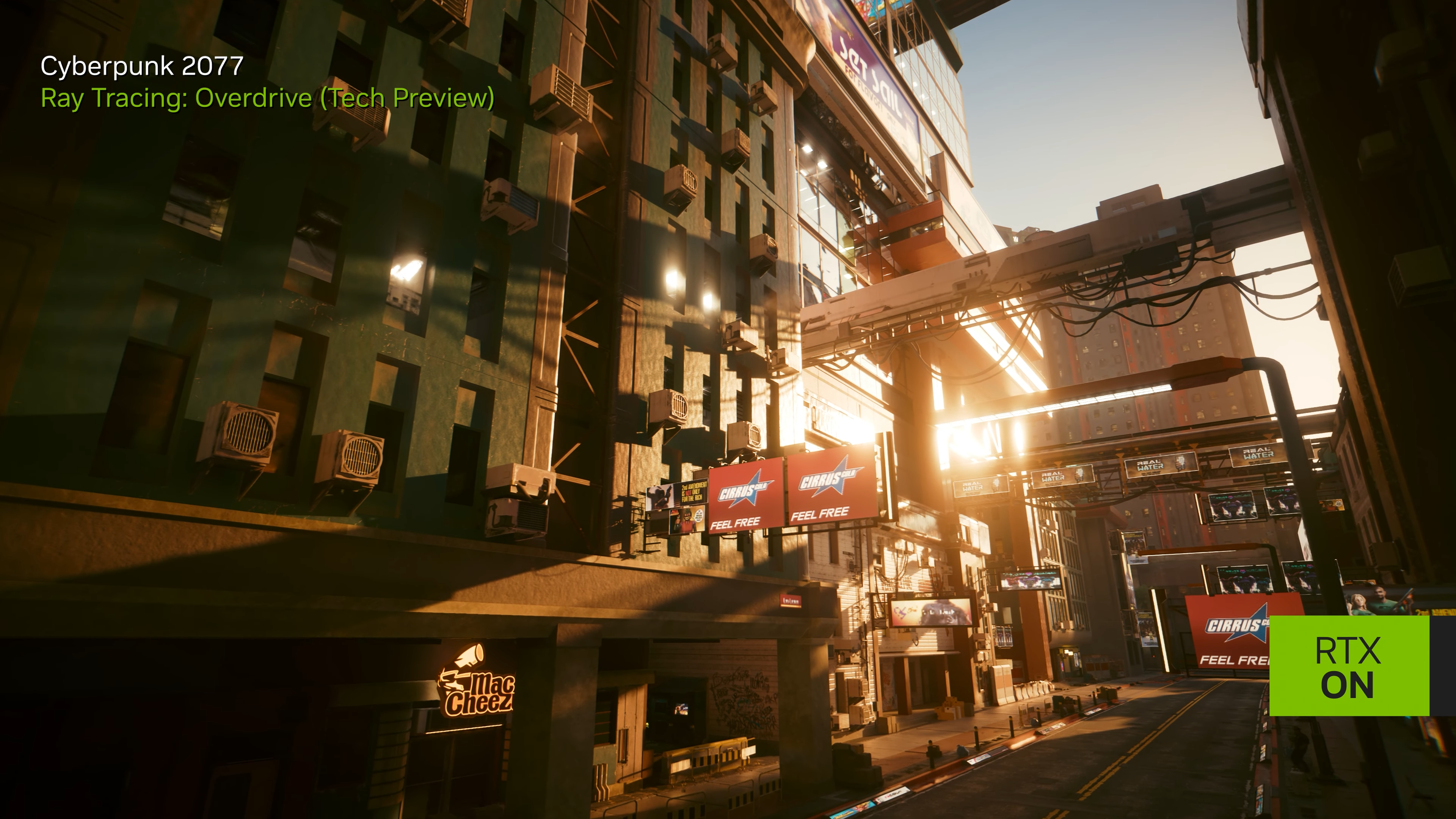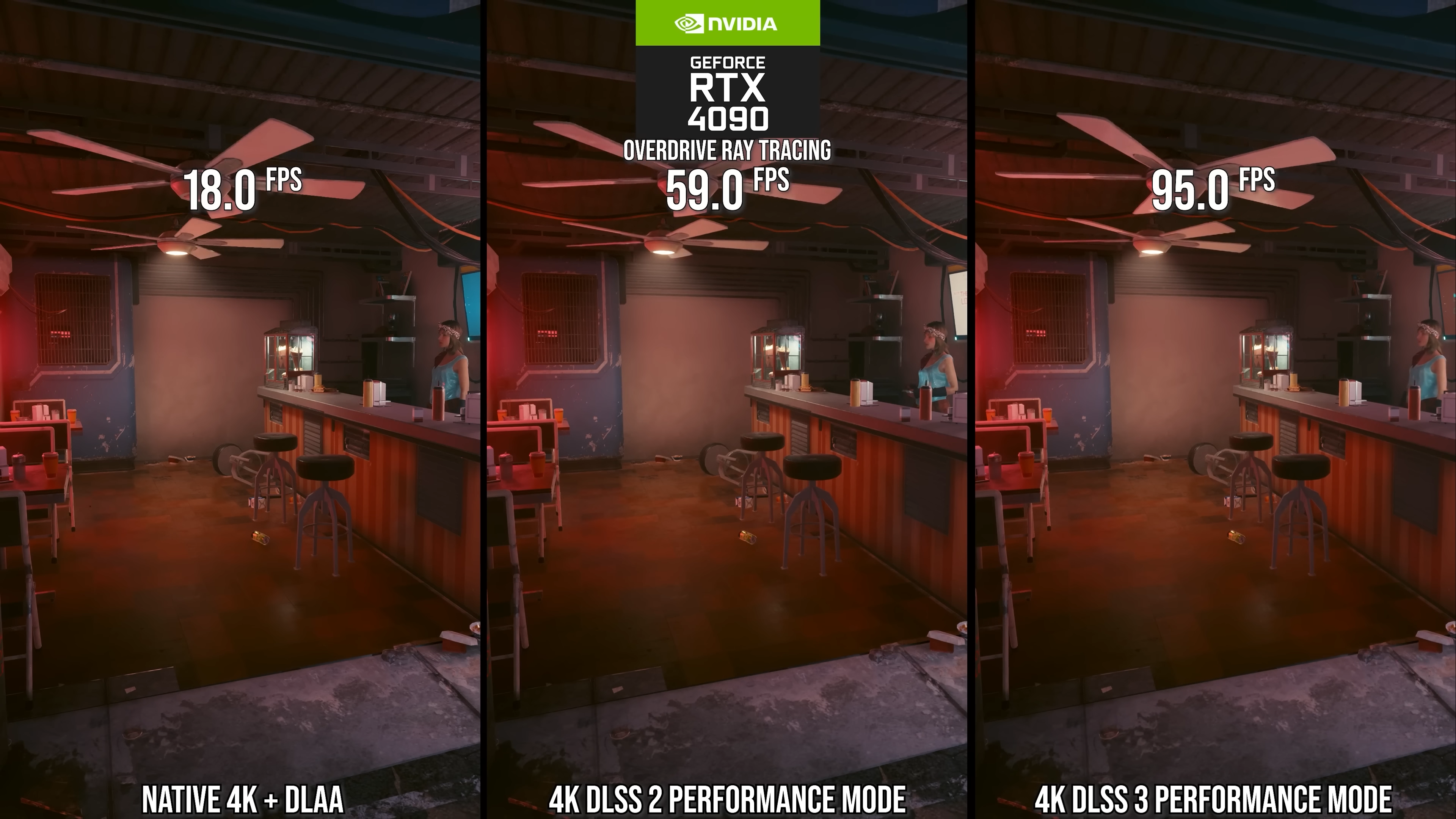
Cyberpunk 2077 has finally received its long-awaited Ray Tracing: Overdrive Mode update with Patch 1.62. The patch adds a new graphics option to the game (Overdrive Mode) that brings full-blown path-traced lighting, replacing all rasterized lighting with real-time lighting simulation. The effects are phenomenal, but the performance hit is intense. As a result, CD Projeck Red requires an RTX 3090/3090 TI (for 1080P 30FPS) or RTX 4070 Ti or faster to run Overdrive Mode.
Check out our previous coverage here for a full rundown of the game's path-tracing lighting effects. But to sum up, Overdrive Mode replaces nearly all light sources with path-traced 3D simulated light, significantly increasing Cyberpunk 2077's image quality. Previous/lower-end ray-tracing modes used a hybridized approach of utilizing RT effects sparingly to keep performance high. With Overdrive Mode, the game transitions to a fully unified ray-tracing pipeline designed for path-tracing from the ground up.

Before you get confused, NVIDIA and CD Projeckt Red use the terms ray-tracing and path-tracing interchangeably in Cyberpunk 2077's Overdrive marketing. However, the mode revolves around path tracing almost entirely — just to set the record straight. Path tracing is a more performant method of simulating 3D light and produces nearly identical results to ray tracing.
In practice, Overdrive makes a night and day difference to the game's atmosphere, especially in darkly lit and shadowy areas. Where rasterized lighting methods struggled to produce realistic ambient lighting, leading to light leakage, incorrectly shadowed objects, and more. Overdrive's full path-tracing graphics pipeline fixes all these issues.
Performance

CD Projekt Red was not kidding about Overdrive Mode's graphics requirements. The game is effectively Portal RTX on steroids since the GPU has to render full-blown path-traced lighting effects in an open-world environment.
According to initial performance results by Digital Foundry, Nvidia's GeForce RTX 4090 runs the game at just 18 FPS at 4K resolution with Overdrive Mode engaged. To achieve 60FPS, DLSS 2 performance mode was required without frame generation. However, with DLSS 3 frame gen enabled, the RTX 4090 achieves nearly 100FPS.
The RTX 4090 appears to fair significantly better natively at 1440P and 1080P. Daniel Owen tested both of these resolutions with Overdrive Mode and found the RTX 4090 could achieve roughly 45FPS at 1440P and over 60FPS at 1080 natively.
Sadly, most of the initial performance coverage largely covers the RTX 4090 only. But we found one performance overview from someone running an RTX 4070 Ti. Unsurprisingly the GPU fairs significantly worse than the RTX 4090 with Overdrive Mode, averaging less than 25 FPS at native 1440P with frame generation enabled. To hit 60+ FPS, DLSS quality and frame generation was required. However, take his results with a grain of salt since we can't verify the validity of his test setup.
Again, Cyberpunk 2077's Ray-Tracing: Overdrive Mode is available only to RTX 3090 series GPUs and RTX 4070 Ti or faster GPUs. However, Overdrive Mode is accessible in the game's photo mode if you have an 8GB graphics card or better. The patch is available now for all Cyberpunk 2077 owners.







